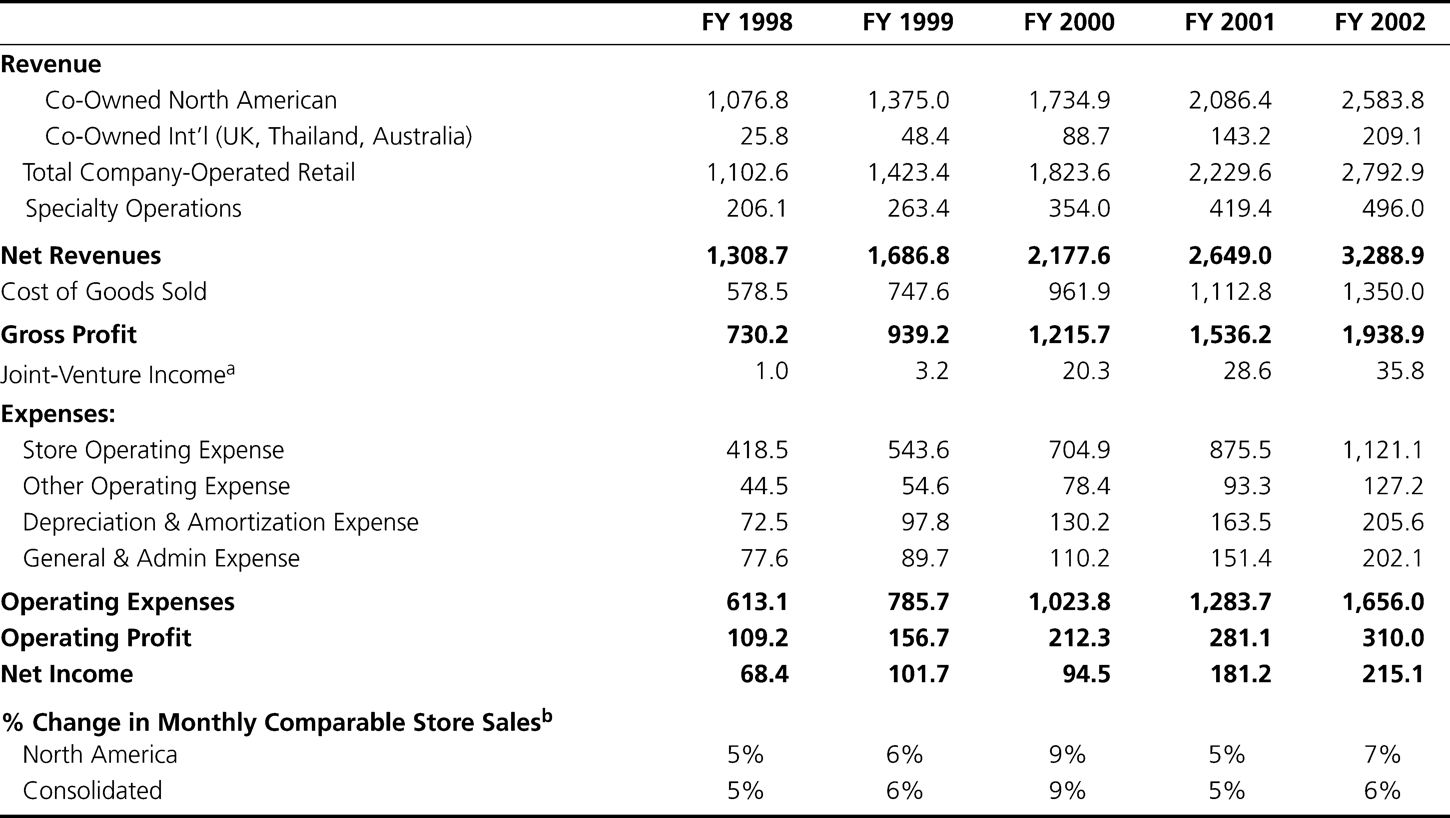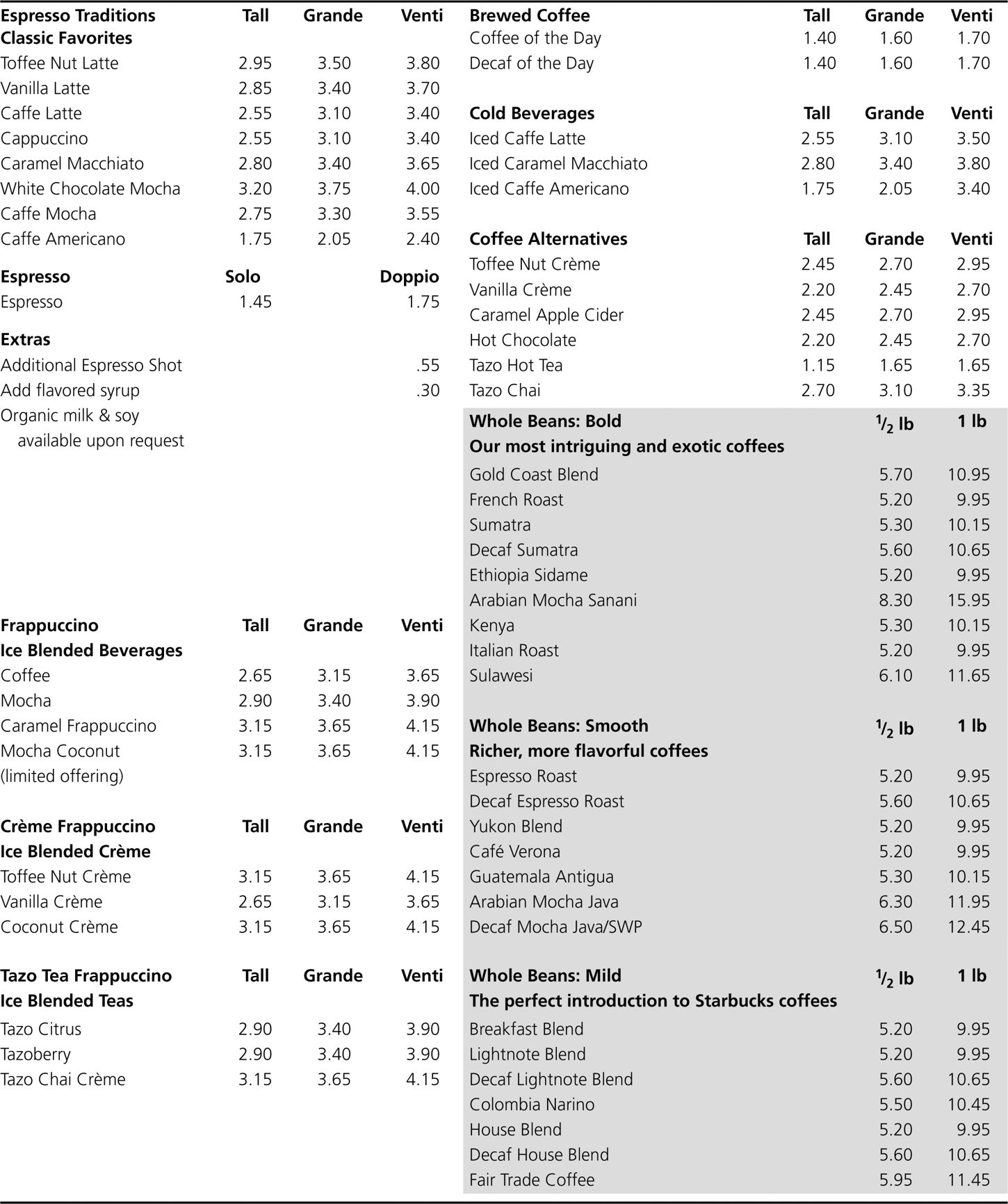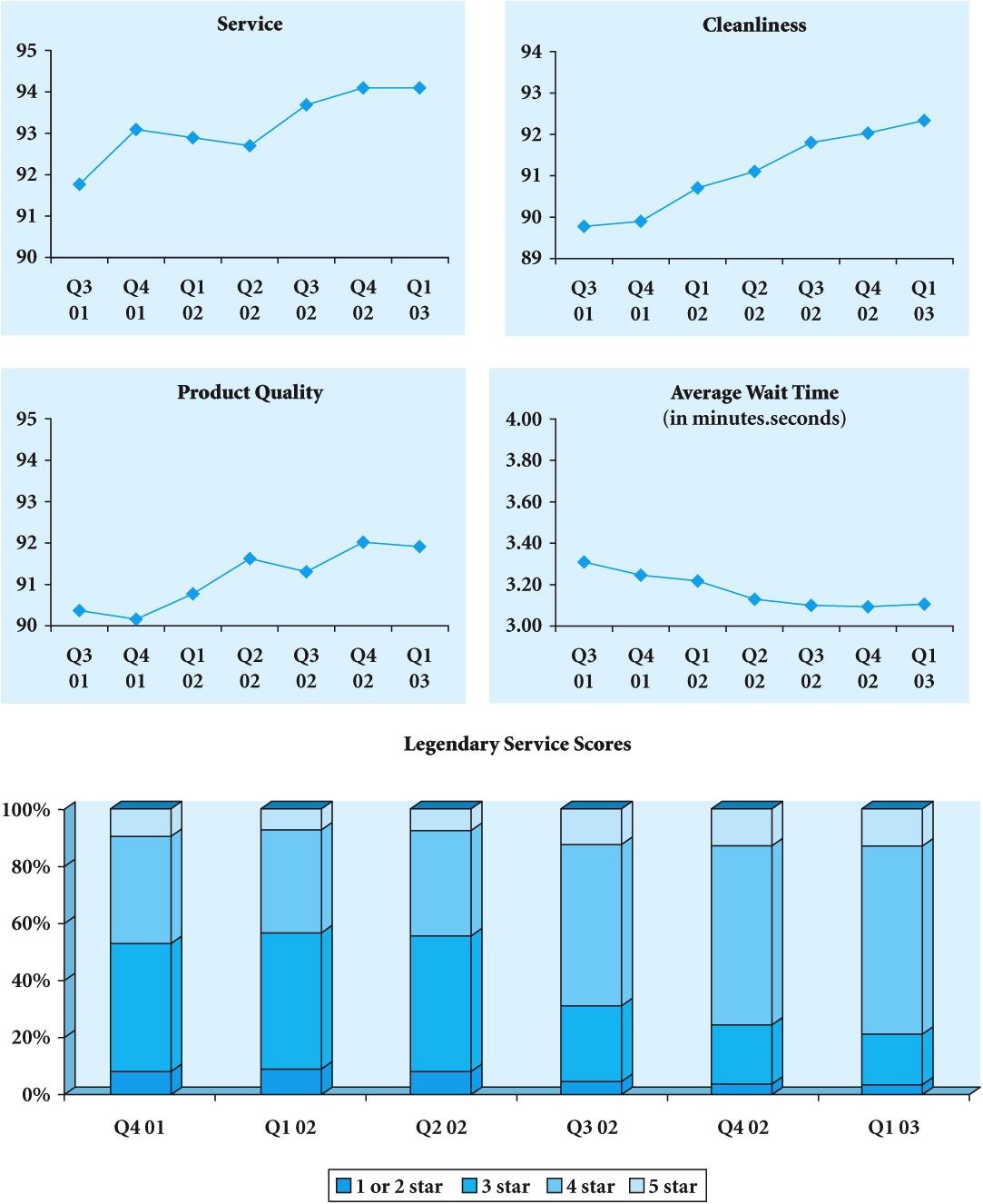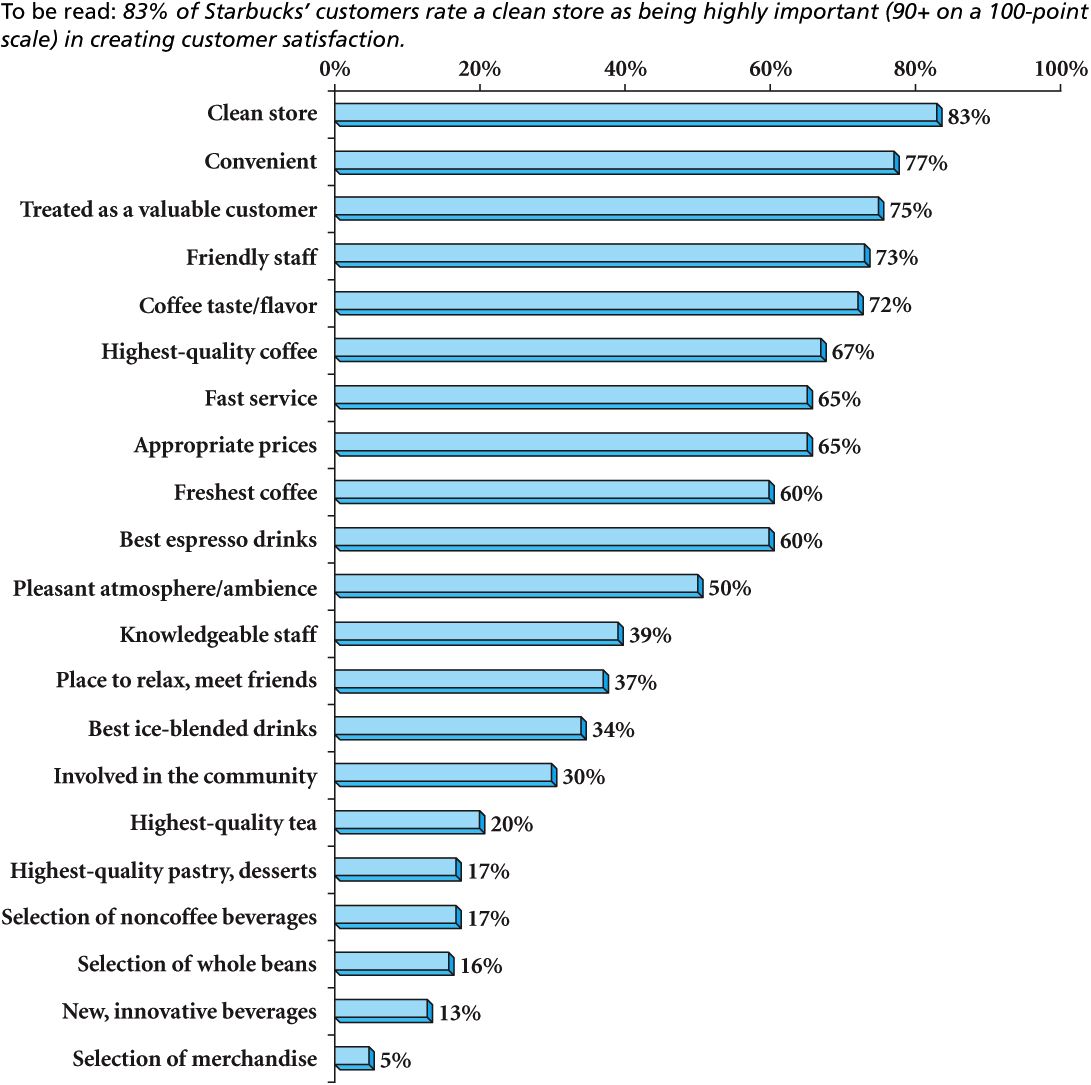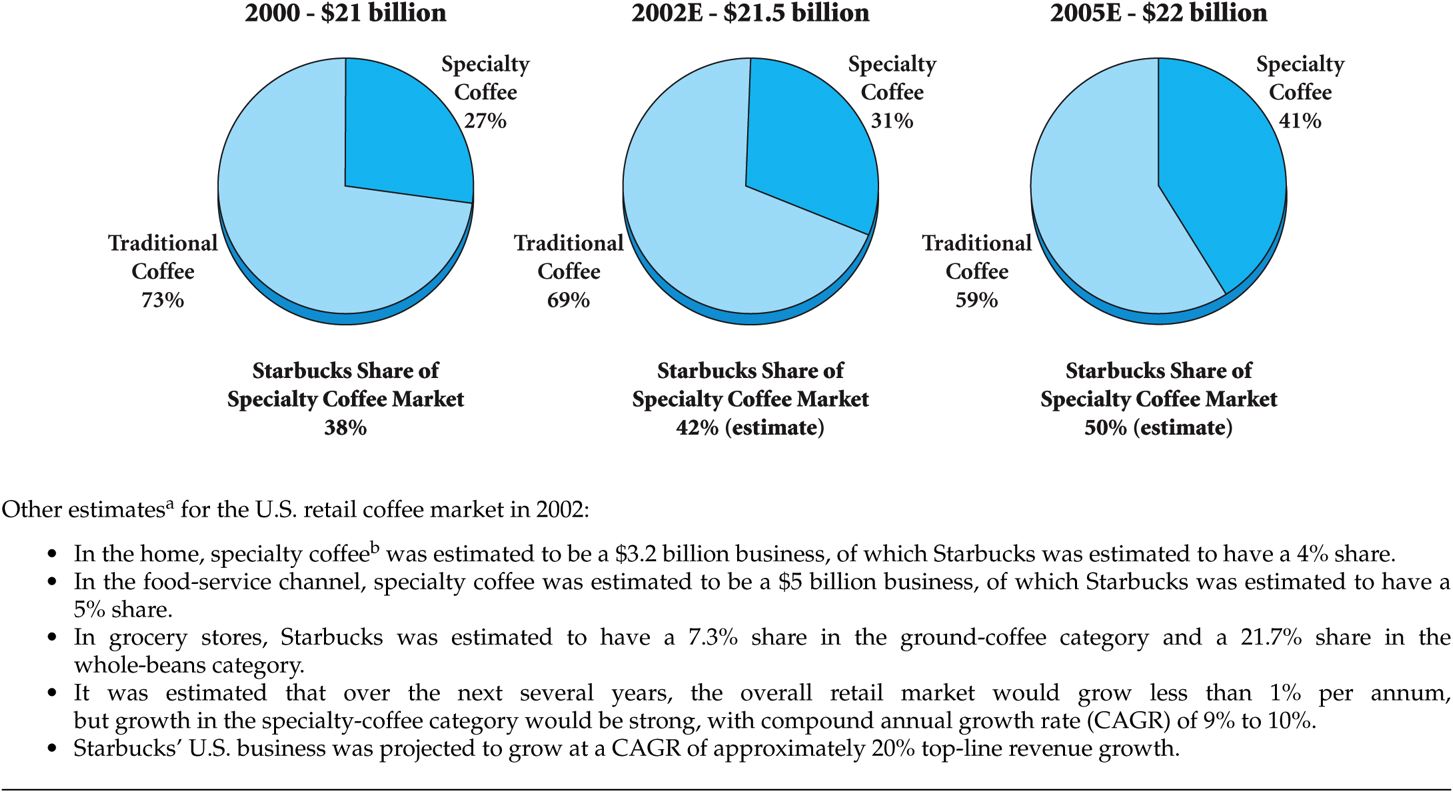Executive Summary
Starbucks is known as the dominant Coffee shop in North America. It re-evaluated its performance and identified new opportunities and challenges in the industry. Company objectives during the study targeted five key areas. First, it attempted to establish factors that accounted for Starbucks’ success in the early 1990s and what compelled its value population. Secondly, the study aimed to discover why Starbucks’ customer satisfaction levels nosedived. Thirdly, it attempted to examine how Starbucks had changed since its early days. Fourthly, it aimed to evaluate customer satisfaction levels. Finally, the central question to the top management aimed at discovering whether or not to invest $ 40 million on labor training and recruitment.
Starbucks Historical Background
Howard Schultz was among the founders of Starbucks. At Seattle Pike Place, Gerald Baldwin, Gordon Bowker and Zier Siegl were among the pioneers who opened a small coffee shop by 1971. It specialized in selling Arabica beans which was a niche market by then.
When Schultz joined the marketing team in 1982, he convinced the company to introduce an Espresso bar in the market, which became a prototype of his vision. He envisaged creation of a chain of coffee houses that would become third place for Americans after home and work (Youngme Moon & John Quetch, 2003).
Schultz’s idea materialized when the founders agreed to sell him the company. He immediately set up franchise stores that focused on beans and coffee beverages targeting high income groups, highly literate and numerate patrons between all ages (25-44). By 1940, the company had raised 140 stores in North West and Chicago.
Schultz’s versatility surprised skeptics when Starbucks was listed on Wall Street. The public offered him $ 25 million. Starbucks grew by 40% and increased net earnings by 50%. The company now serves over 20 million unique customers in over 5000 stores around the globe (Jake Batsell 2002).
Starbucks brand strategy involved control of coffee standards across all its chains, customizing the roasting process and controlling the distribution of products to retail stores across the globe (Youngme Moon & John Quetch, 2003). The company’s central objective was to access to clients from their own settings (Dina Elboghdady, 2002).
Quality service delivery resonated with human resource policies. Fortunate magazine ranked the company 47th as best place to work (Starbucks, 2002). Retail partners underwent trainings on hard and soft skills (Services Maketing). This was tackled through training baristas, ensuring a consistent production process, and simplifying beverage production process (Dina Elboghdady, 2002).
The Starbucks Problem
The research findings were a wake up call when it was discovered that service gap kept on widening. Starbucks was not meeting customer expectations because competition from smaller shops had increased. It implied that their market niche was not safe (Services Marketing). Starbucks also faced confusion of brands between competitors and Starbucks’ by customers.
Perceptions indicated that Starbucks’ customers had transformed from old and affluent to young and less affluent clients. Products needed redesigning to suit the new niche market. The company’s chain stores in other countries had the likelihood of compromising quality and regulatory risks on intellectual property. This would enhance competitor attacks.
Starbucks and its Post modernism
Starbucks forces of organization such as workforce, technology and markets have turned diverse, electronic and global as opposed to local, homogeneous and mechanic. Its values transformed from stability and efficiency to change and flexibility (Ray, 1986).
Jaffe argues that bureaucratic organizations are based on three basic principles a) formalization in form of procedures and policies b) routinization and rational-legal authority (Jaffe, 2001). Starbucks can be identified as one such organization.
George Ritzers’ conception in what he calls McDonalization captures starbucks’ operations such the fast food industry operating under efficiency, predictability, control and calculability (Ritzer, 1993). The logic of modern organizations is segmentation into smaller responsibilities or parts for accomplishing tasks (Heydebrand, 1989).
Starbucks Consumer Expectations
Consumer expectations were gauged through an earlier research done by the organization. The findings were a pointer to public perceptions about Starbucks. Most expectations showed that Starbucks had the cleanest stores (83%); had appropriate products (77%); had friendly and available staff (73%). A focus on customer retention showed that customers who first started visiting Starbucks in the past one were passionate about Starbucks (27%). Those who visited in 1-2 and 2-5 years were represented by 20% and 30% respectively.
Perceived Risks
Starbucks had chain stores outside North America. This has many risks that needed attention. First, intellectual property was at risk of infiltration by competitors since Starbucks would not have full control. The inability to satisfy the expanded customer base showed the potential for customer loss. Familiarity of brands between Starbucks and its competitors confused customers. Furthermore, Starbucks ran the risk of dropping in sales growth while Baristas remained few (Starbucks, 2003).
Alternative Analysis and Selection Criteria
According to Day, Starbucks’ future was based on an aggressive mission focused on two drivers of company growth; retail expansion and product innovation (Stanley Holmes, 2002). In 2001, the Stored Value Card (SVC) – a swappable card was launched which could pay transactions in any company operated store in N. America and Hot Spot wireless T-mobile in 2000 stores for high speed internet (Holmes, 2002).
Recommendations
Christin Day’s proposal to invest $ 40 million annually in 4500 stores to allow stores to add 20 hours of labor a week was tenable. New customer trends had changed and needed new products to capture their needs. Increased funding for more research and design was still viable.
Action and Implementation Plan
- Approve $ 40 million investment proposal and recruit baristas for training as soon as possible.
- Source more funds for research and design.
- Reinvent customer retention strategies
- Rebrand non poorly performing products
- Fill the service expectation gaps
- Introduce an IT system or portal to link all the chain stores for ease of marketing and sales
- Train the staff of products and services to improve service quality.
Conclusion
The report concludes that the $ 40 million loan to recruit baristas is viable. It also depicts that customers have transformed. The market niche has changed and product re-branding is necessary. It also shows that despite outstanding performance in the industry maintain the leadership position was a challenge.
Reference List
Batsell, J. (2002). A Grande Decade for Starbucks, The Seattle Times. Web.
ElBoghdady, D. (2002). Pouring It On: The Starbucks Strategy? Locations, Locations, Locations. The Washington Post. Web.
Heydebrand, W. (1989). New Organizational Forms. Work and Occupations, 16 (3), 323-357.
Holmes. S. (2002). Starbucks’ Card Smarts. Business Week. Web.
HSBP. (2003). The Hard side of Change Management. Web.
Jaffe, D. (2001). Organization Theory: Tensions and Change. New York: McGraw-HillRay, C.H. (1986). Corporate Culture: The Last Frontier of Control? Journal of Management Studies 23 (3), 287-29.
Ritzer, G. (1993). The McDonaldization of Society. London: Pine Forge Press.
Youngme, M & Quelch J. (2003). HBS Cases. Massachusetts: Harvard Business School Services Marketing. Pearson Learning Solutions p. 580.
Starbucks. (2002). Starbucks’ Customer Perception 2002 Survey Report. Harvard Square, Massachusetts: Cambridge.
Starbucks. (2003) Starbucks Survey Reports February 2003. Harvard Square, Massachusetts: Cambridge.
Appendices
